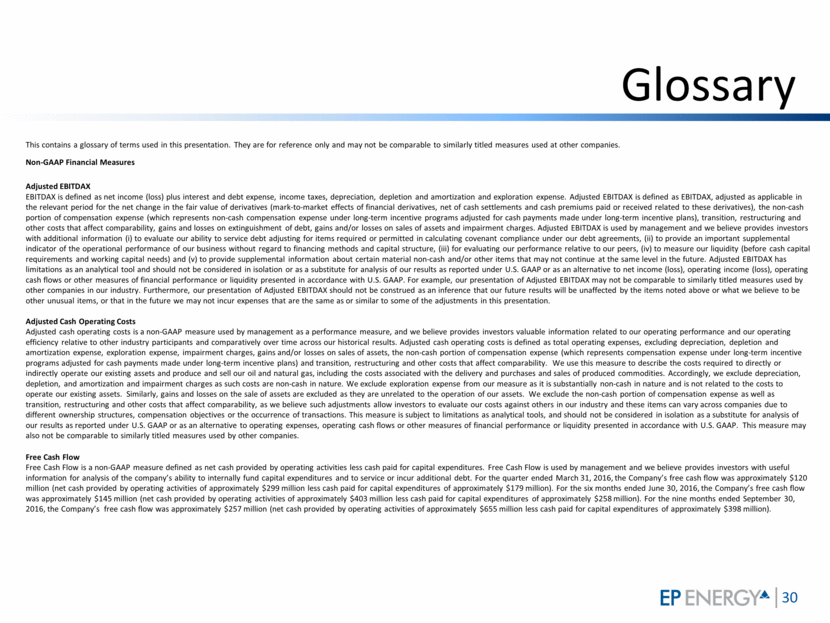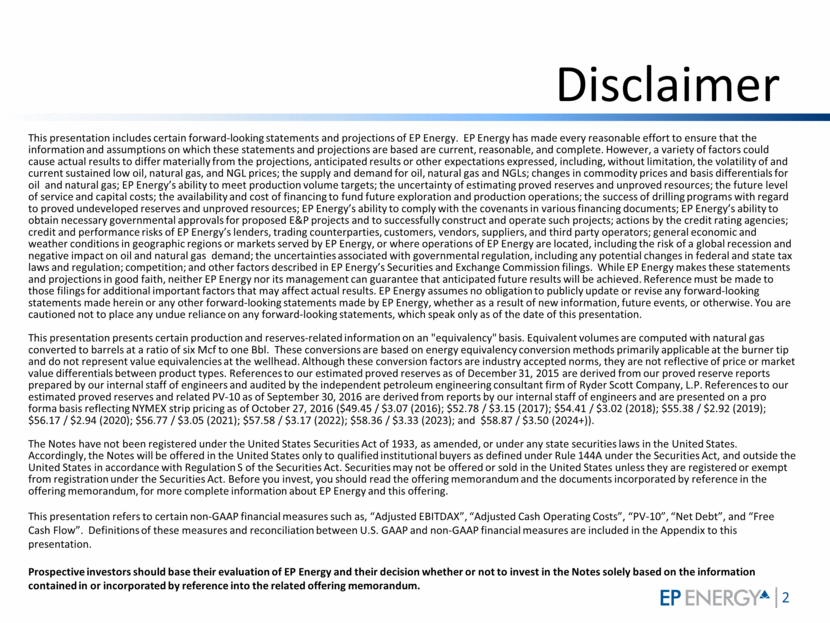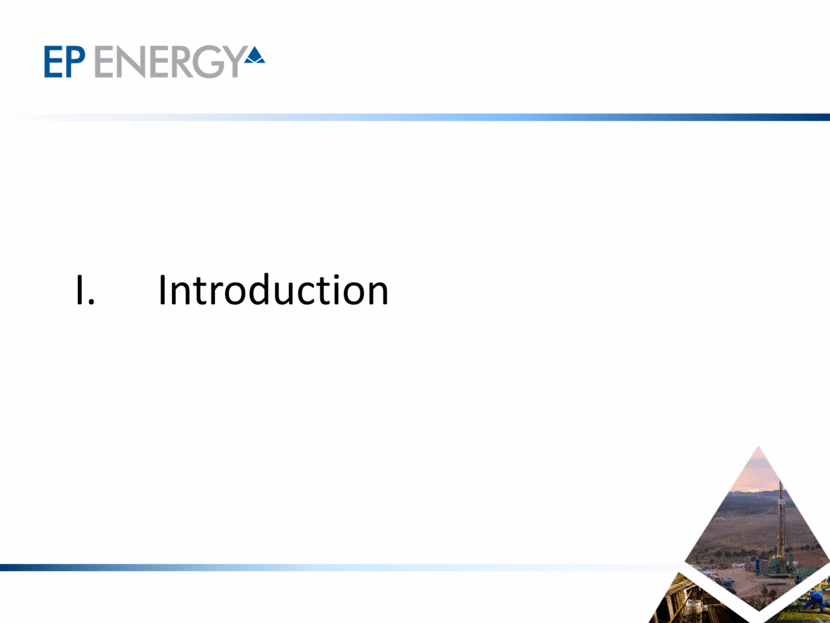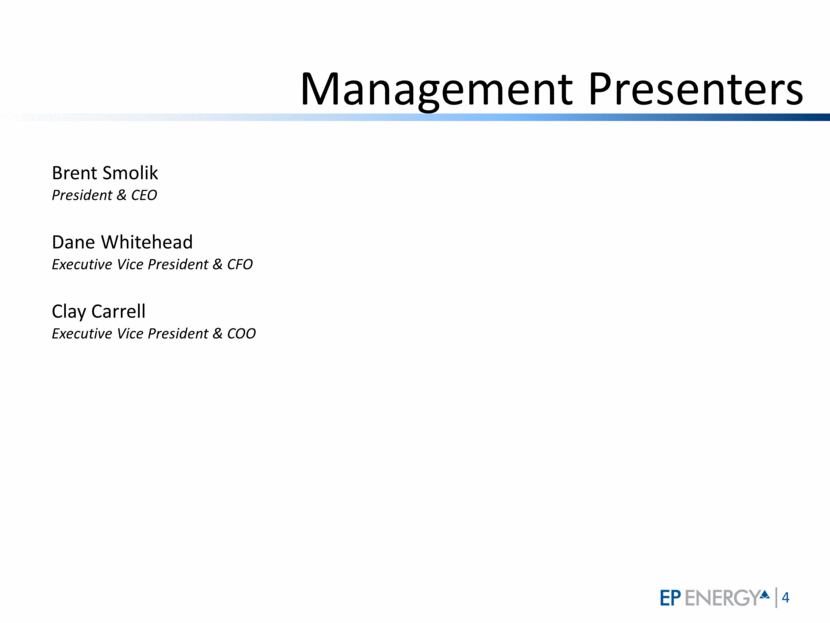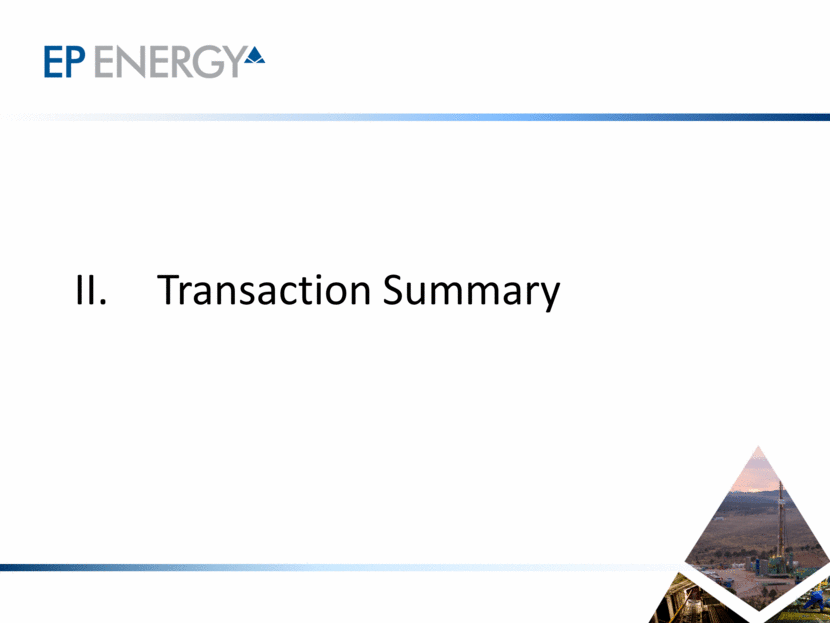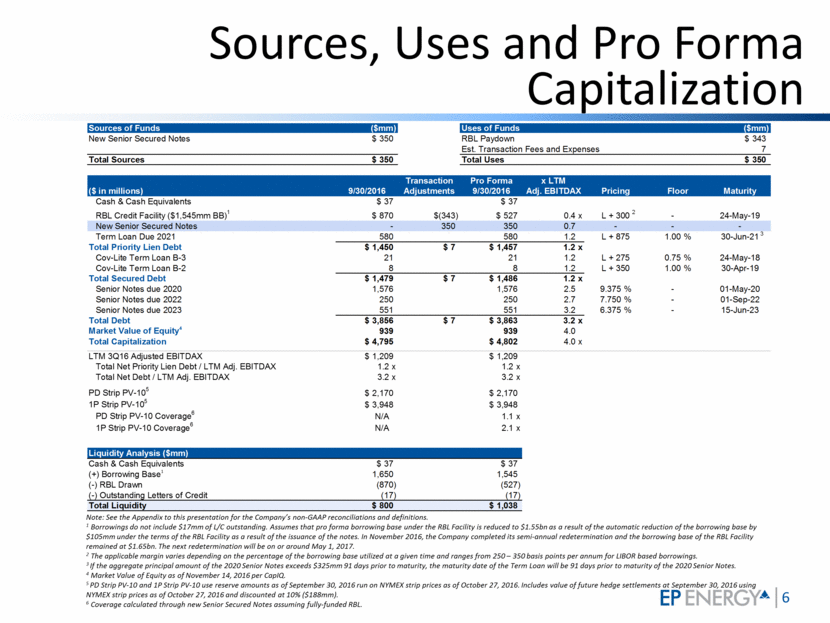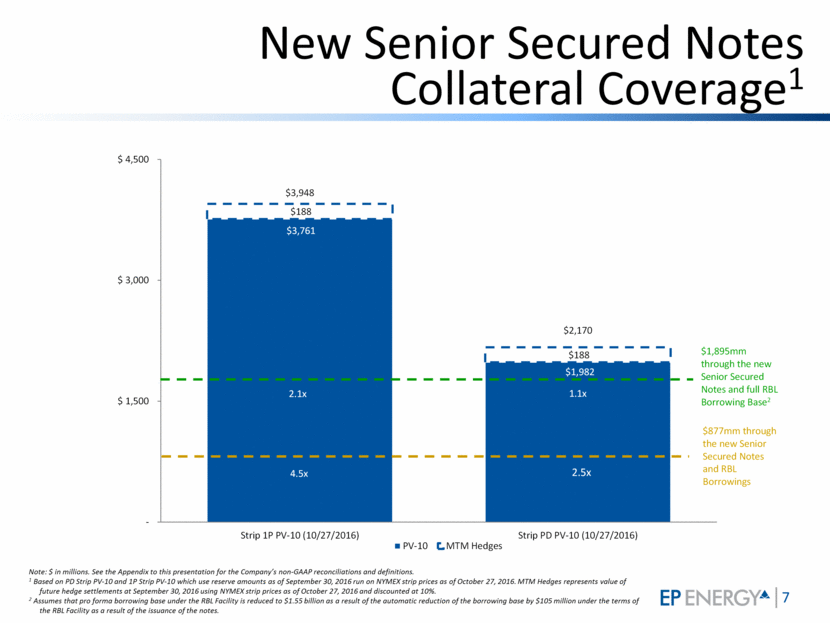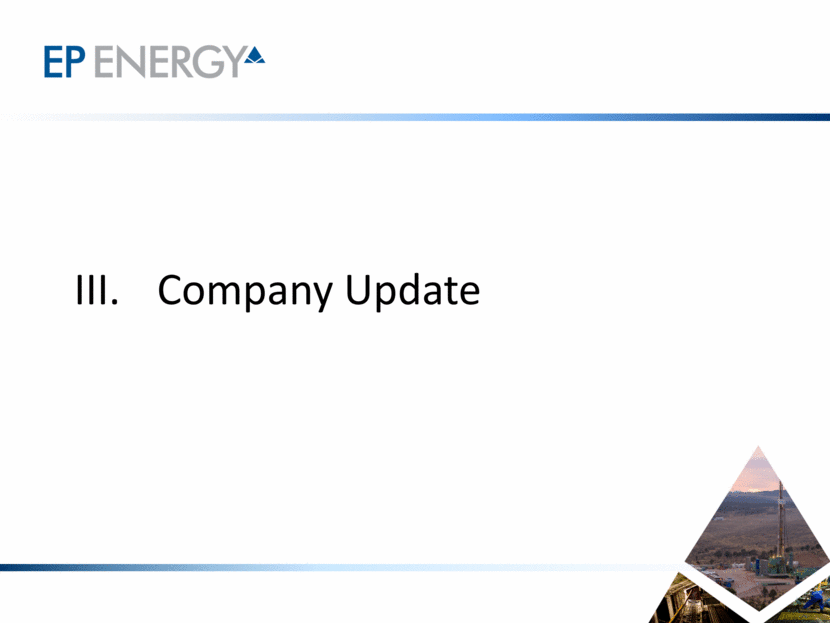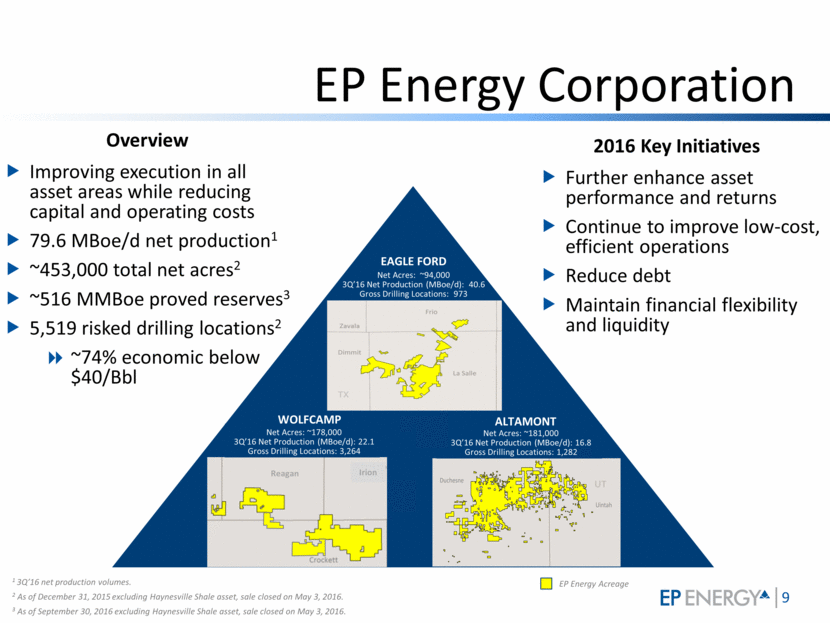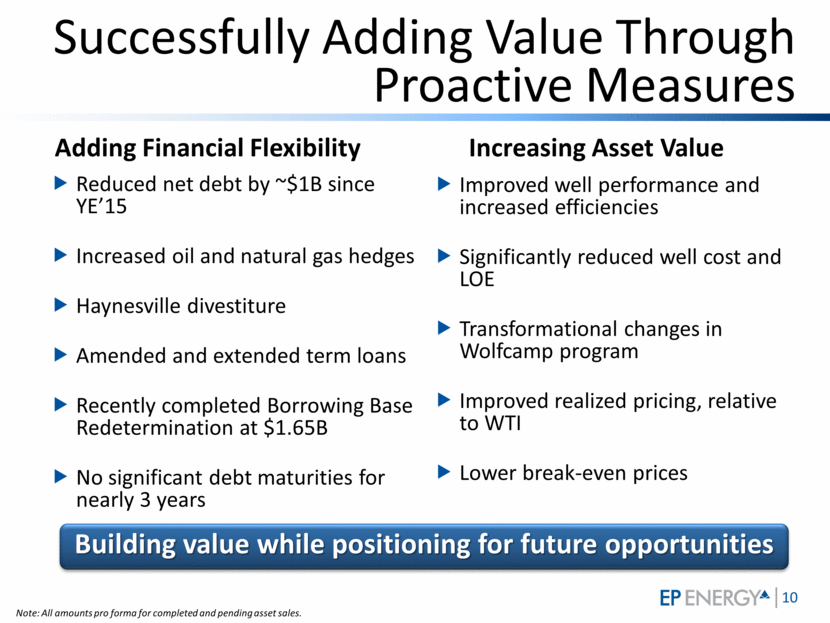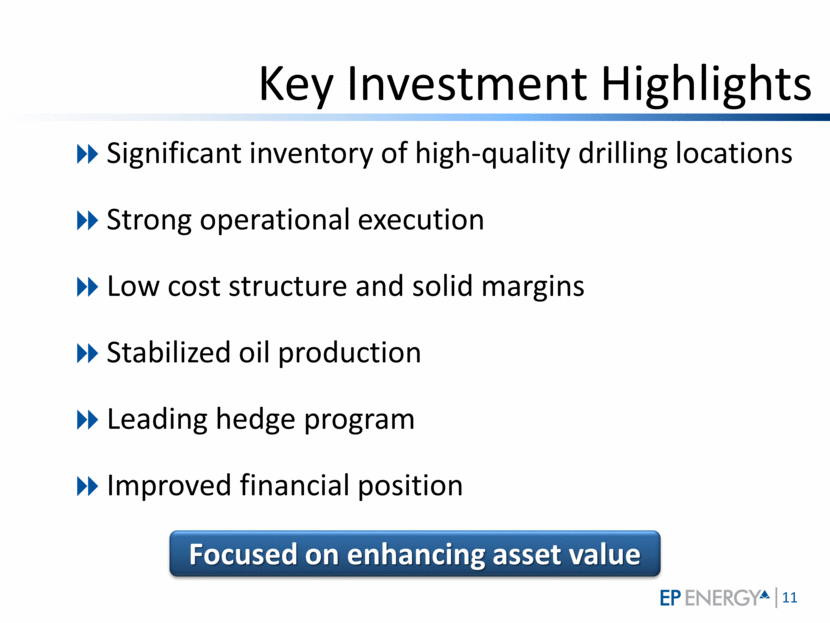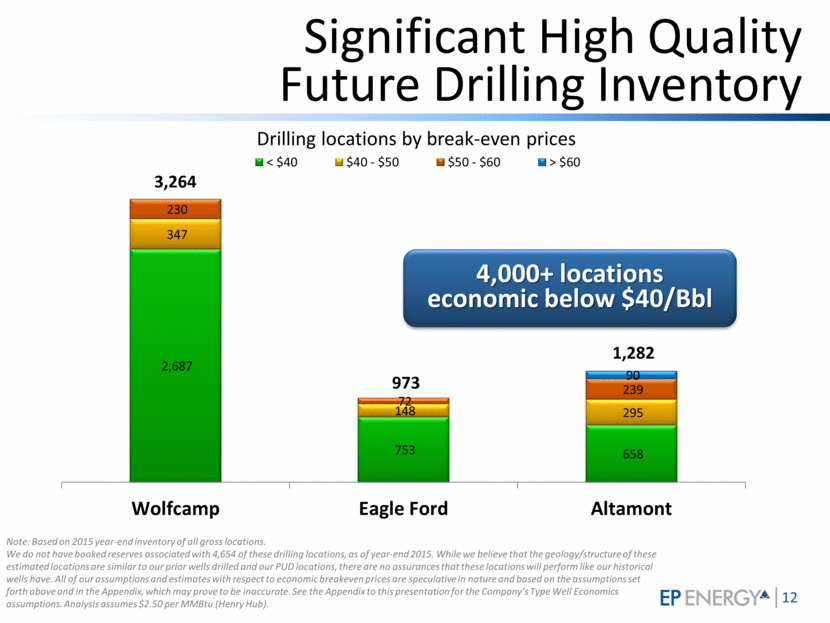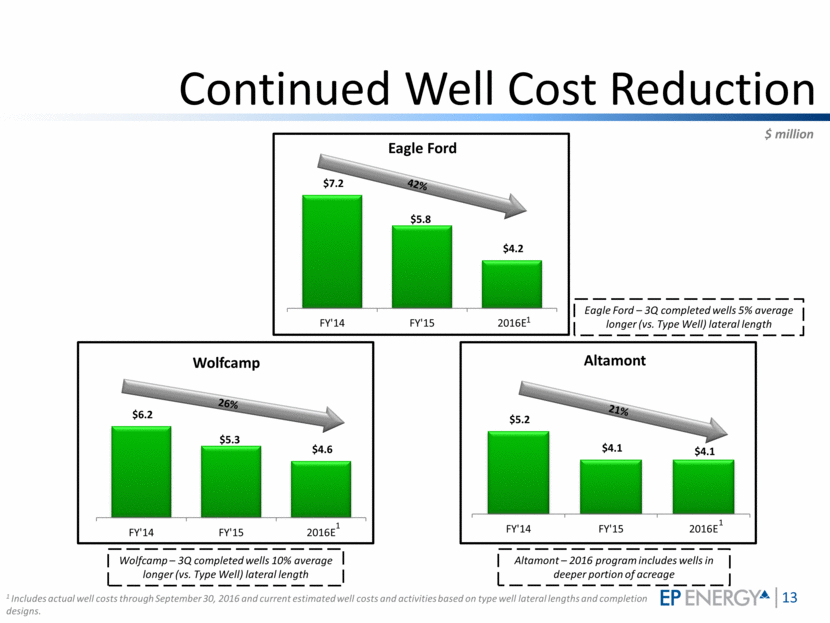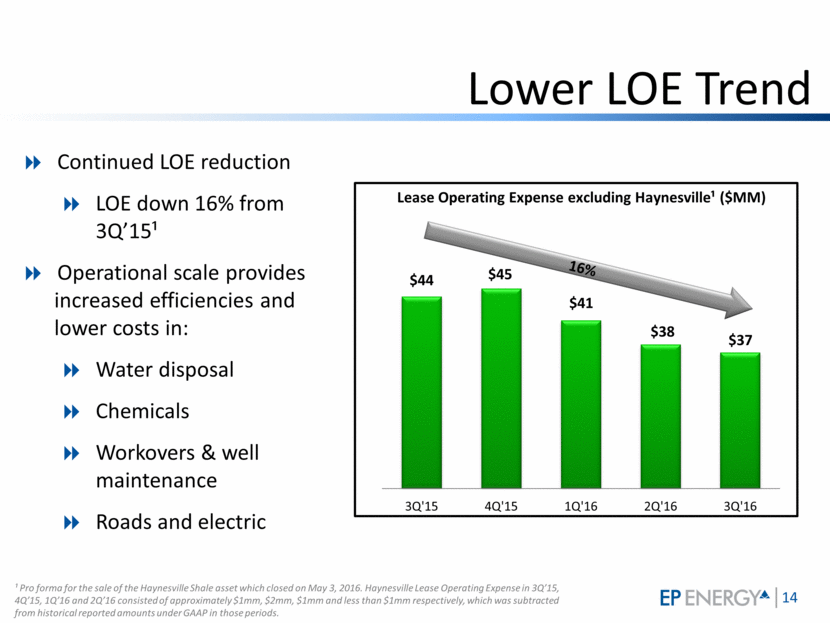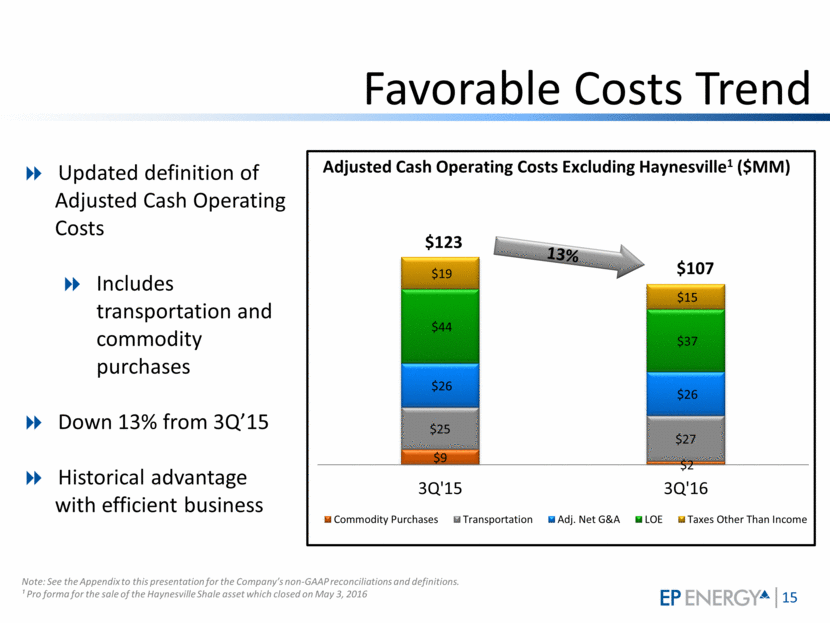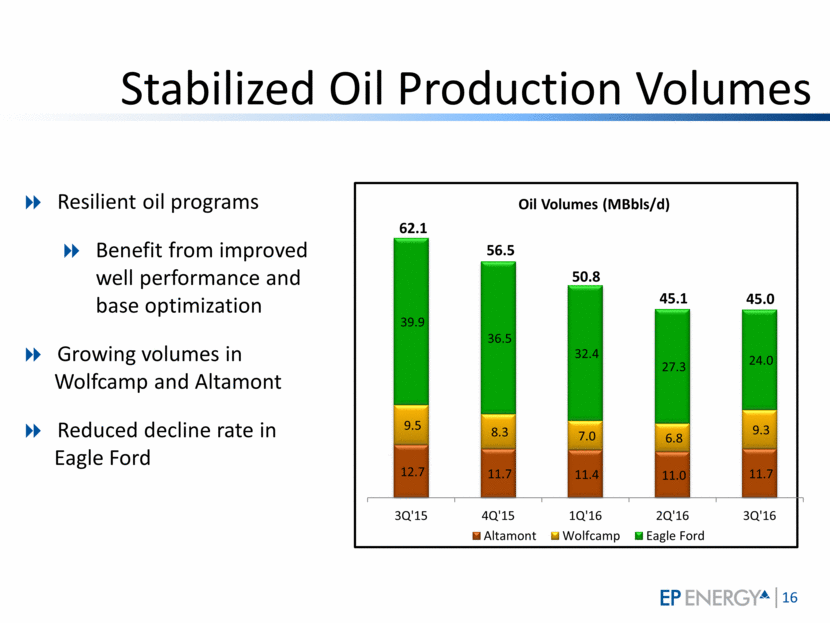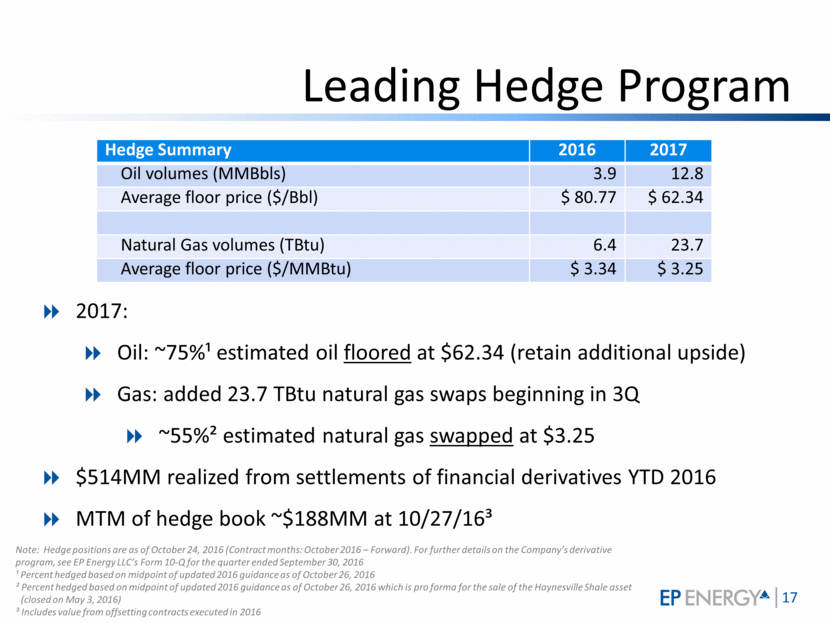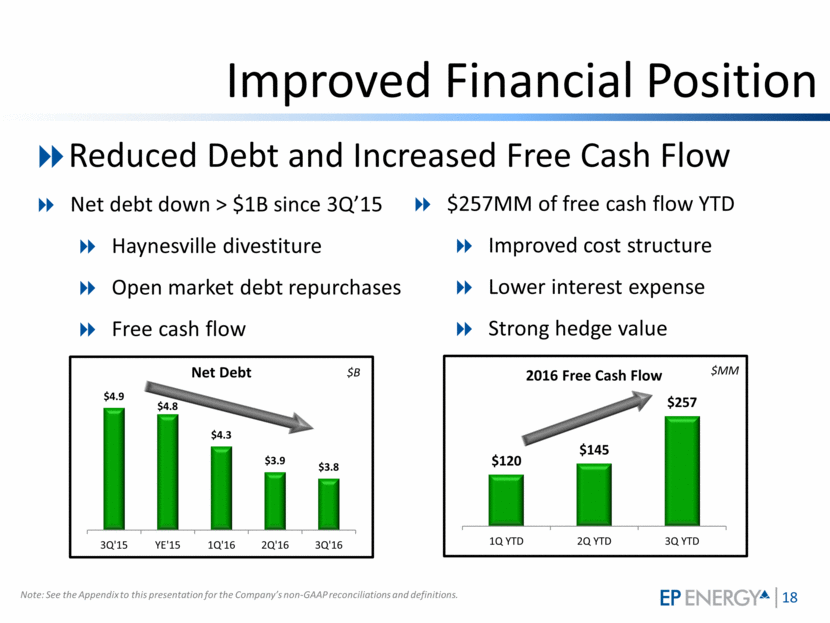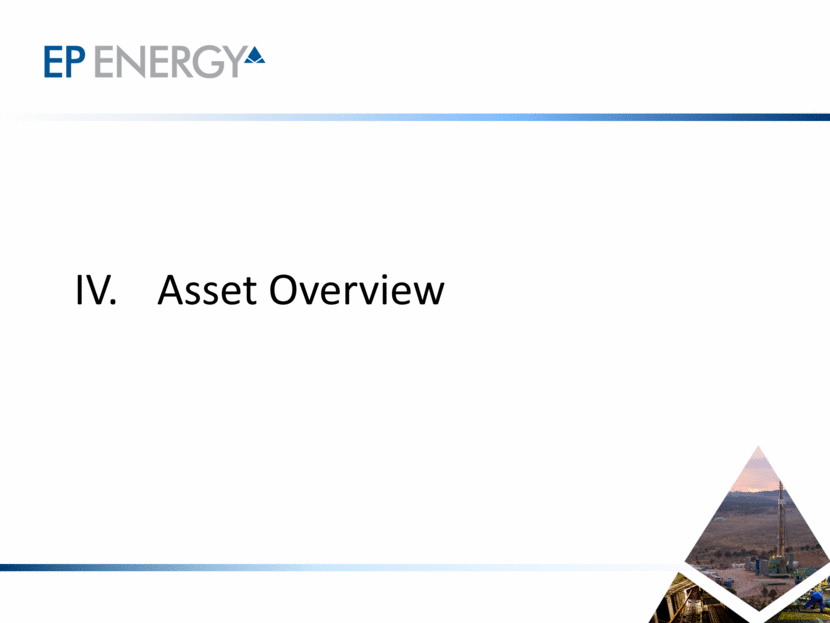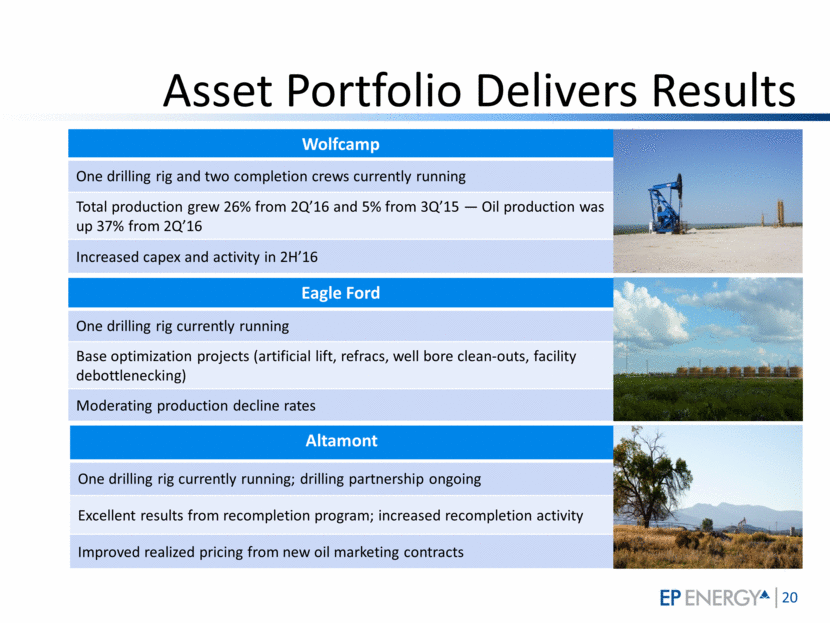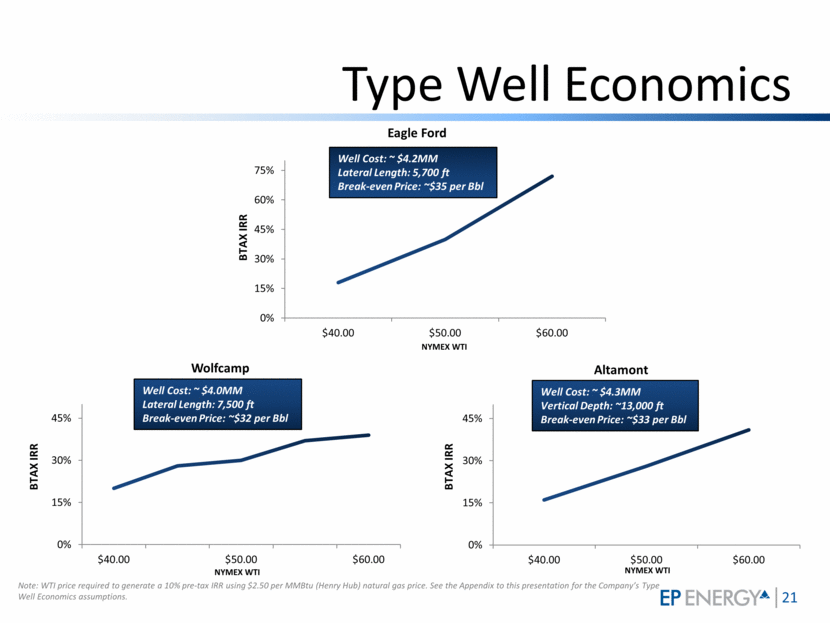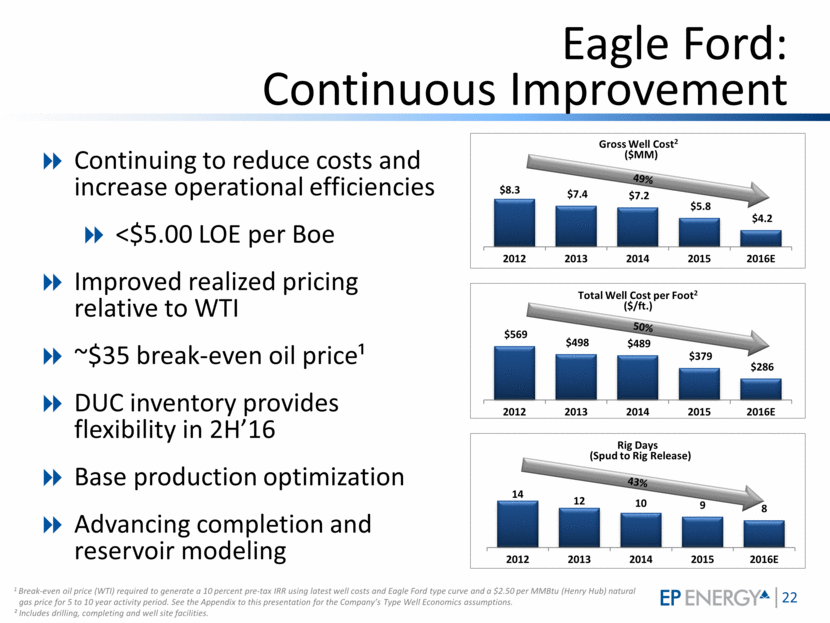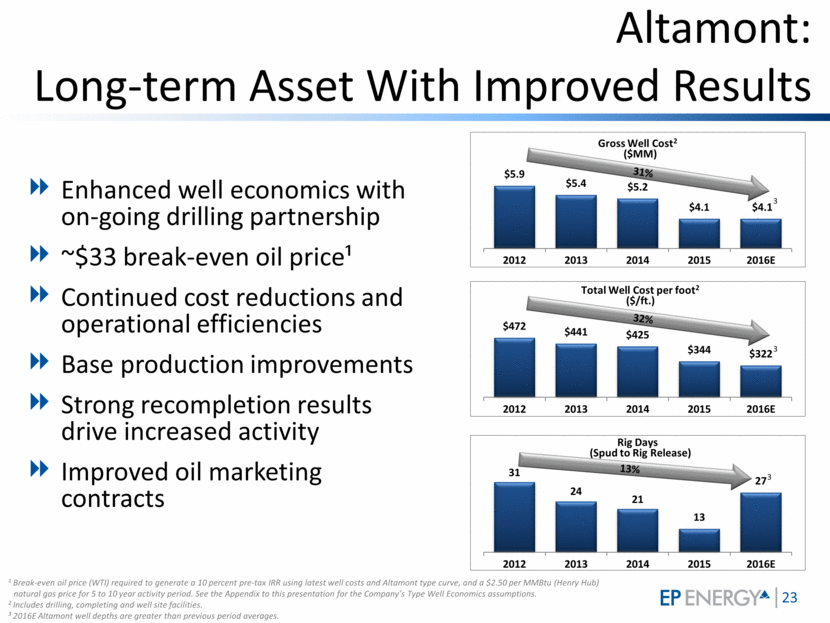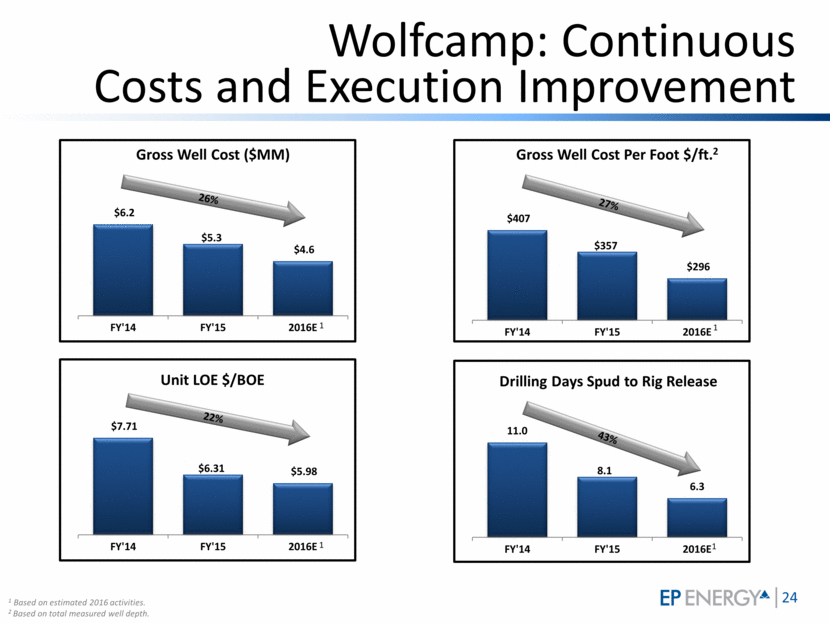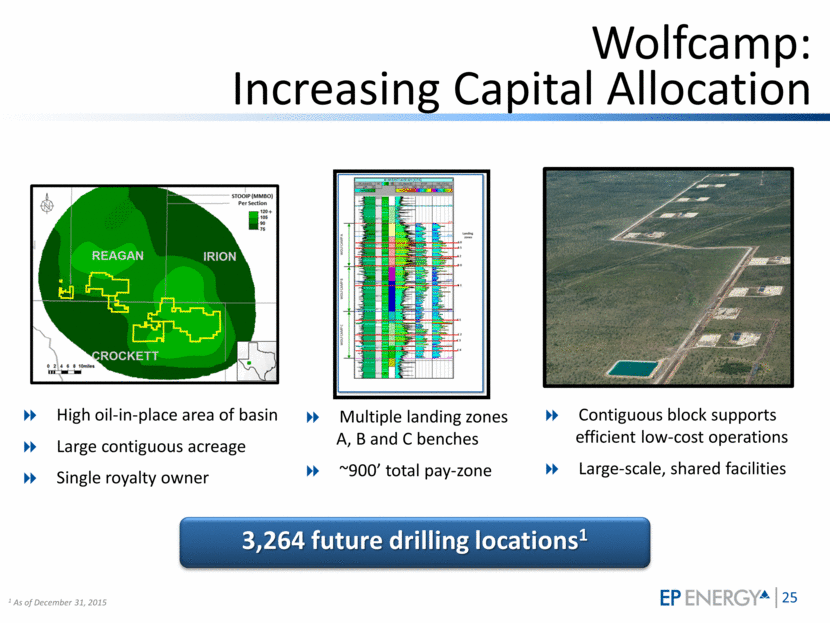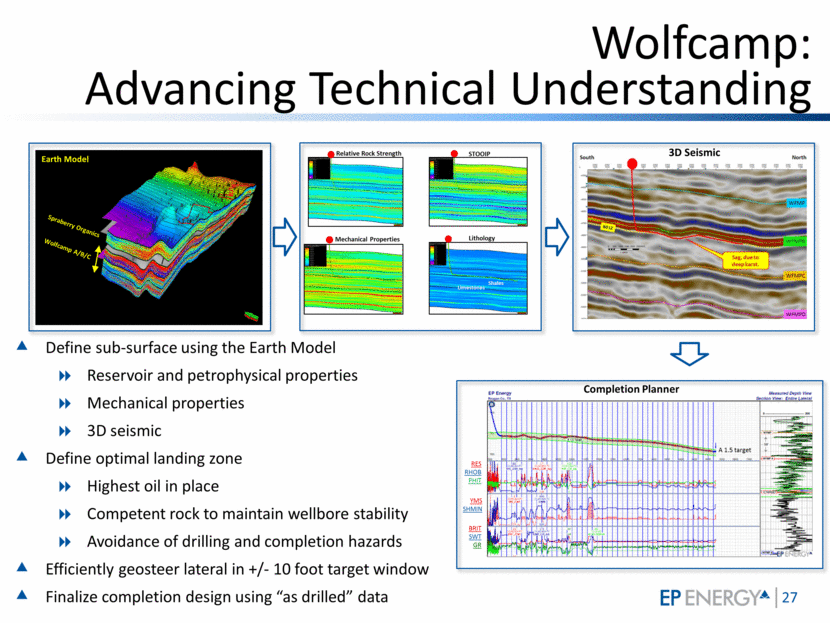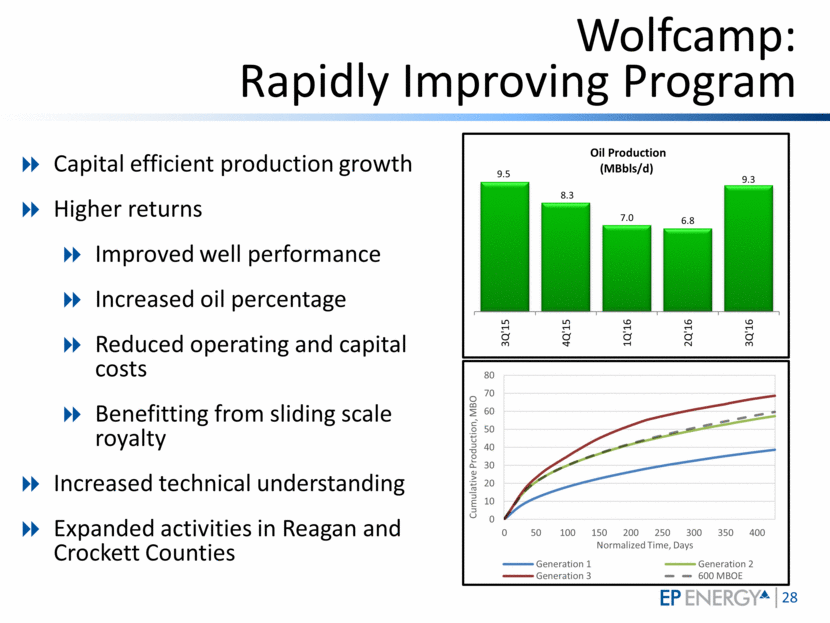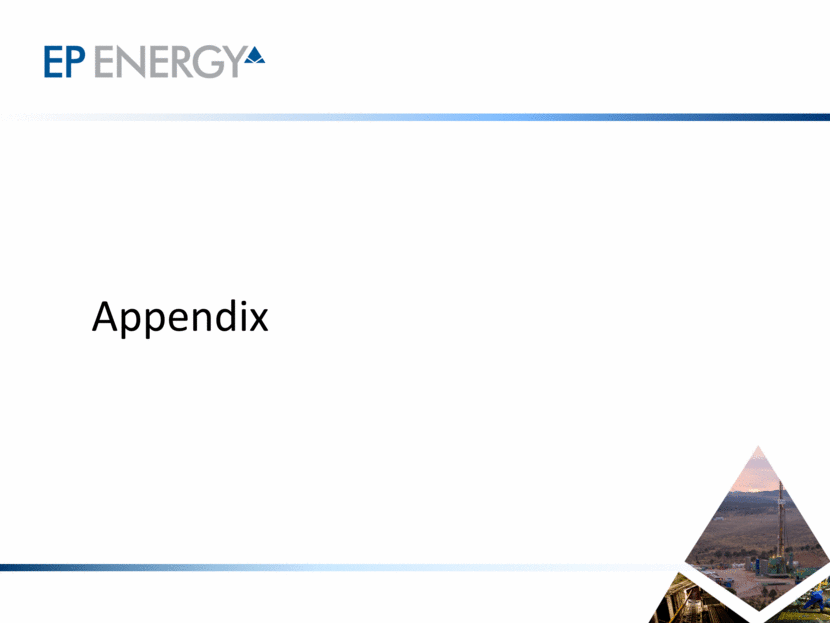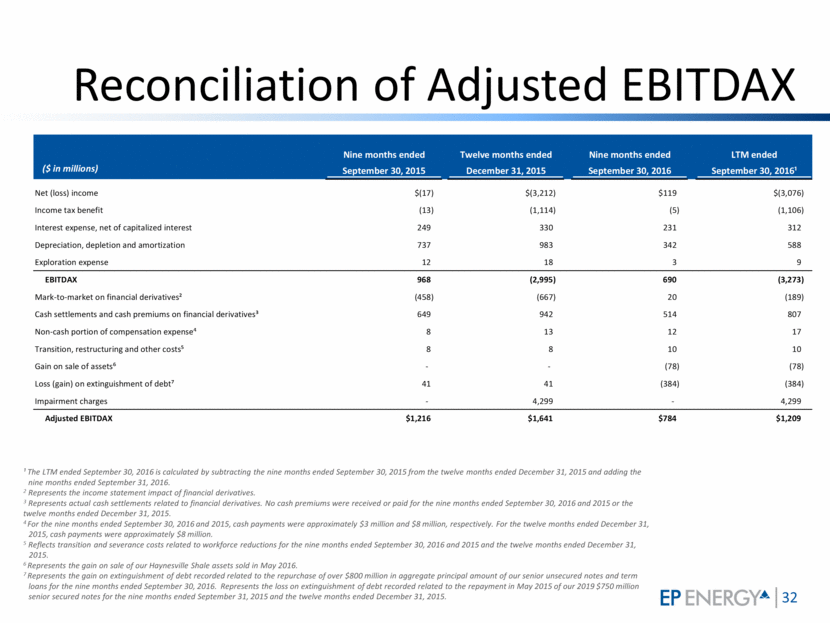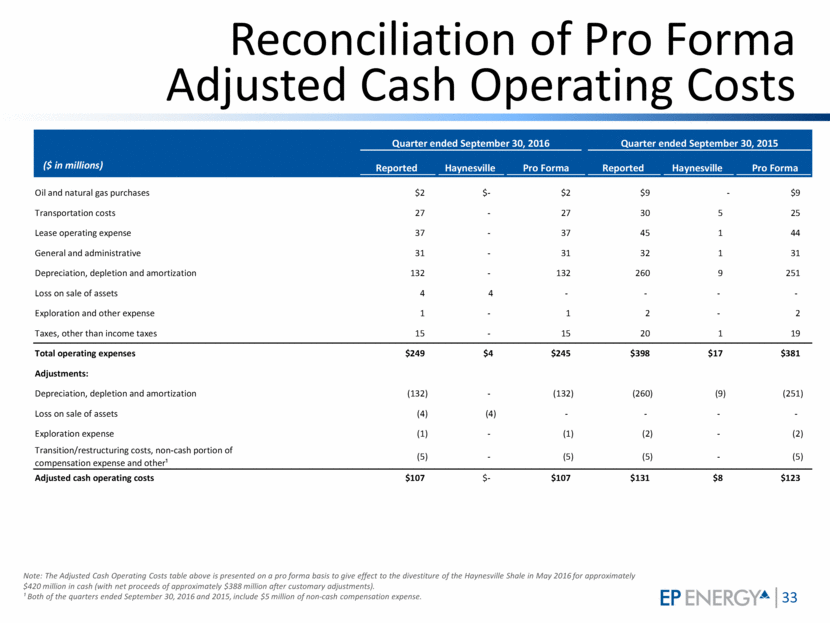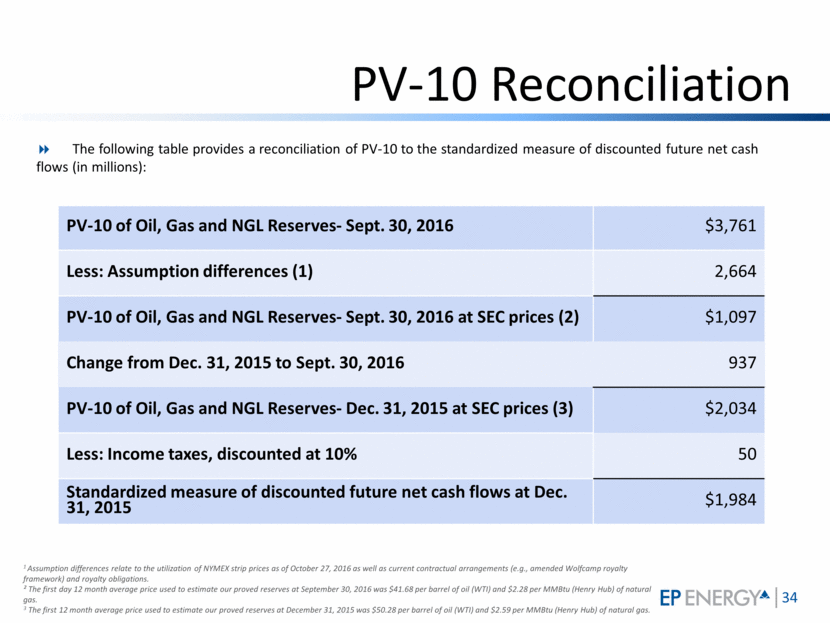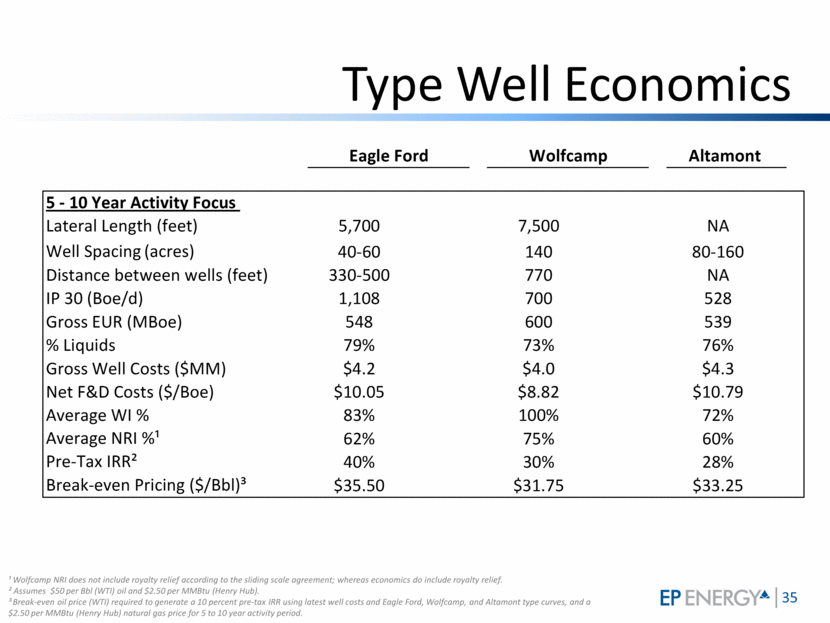Glossary This contains a glossary of terms used in this presentation. They are for reference only and may not be comparable to similarly titled measures used at other companies. Non-GAAP Financial Measures Adjusted EBITDAX EBITDAX is defined as net income (loss) plus interest and debt expense, income taxes, depreciation, depletion and amortization and exploration expense. Adjusted EBITDAX is defined as EBITDAX, adjusted as applicable in the relevant period for the net change in the fair value of derivatives (mark-to-market effects of financial derivatives, net of cash settlements and cash premiums paid or received related to these derivatives), the non-cash portion of compensation expense (which represents non-cash compensation expense under long-term incentive programs adjusted for cash payments made under long-term incentive plans), transition, restructuring and other costs that affect comparability, gains and losses on extinguishment of debt, gains and/or losses on sales of assets and impairment charges. Adjusted EBITDAX is used by management and we believe provides investors with additional information (i) to evaluate our ability to service debt adjusting for items required or permitted in calculating covenant compliance under our debt agreements, (ii) to provide an important supplemental indicator of the operational performance of our business without regard to financing methods and capital structure, (iii) for evaluating our performance relative to our peers, (iv) to measure our liquidity (before cash capital requirements and working capital needs) and (v) to provide supplemental information about certain material non-cash and/or other items that may not continue at the same level in the future. Adjusted EBITDAX has limitations as an analytical tool and should not be considered in isolation or as a substitute for analysis of our results as reported under U.S. GAAP or as an alternative to net income (loss), operating income (loss), operating cash flows or other measures of financial performance or liquidity presented in accordance with U.S. GAAP. For example, our presentation of Adjusted EBITDAX may not be comparable to similarly titled measures used by other companies in our industry. Furthermore, our presentation of Adjusted EBITDAX should not be construed as an inference that our future results will be unaffected by the items noted above or what we believe to be other unusual items, or that in the future we may not incur expenses that are the same as or similar to some of the adjustments in this presentation. Adjusted Cash Operating Costs Adjusted cash operating costs is a non-GAAP measure used by management as a performance measure, and we believe provides investors valuable information related to our operating performance and our operating efficiency relative to other industry participants and comparatively over time across our historical results. Adjusted cash operating costs is defined as total operating expenses, excluding depreciation, depletion and amortization expense, exploration expense, impairment charges, gains and/or losses on sales of assets, the non-cash portion of compensation expense (which represents compensation expense under long-term incentive programs adjusted for cash payments made under long-term incentive plans) and transition, restructuring and other costs that affect comparability. We use this measure to describe the costs required to directly or indirectly operate our existing assets and produce and sell our oil and natural gas, including the costs associated with the delivery and purchases and sales of produced commodities. Accordingly, we exclude depreciation, depletion, and amortization and impairment charges as such costs are non-cash in nature. We exclude exploration expense from our measure as it is substantially non-cash in nature and is not related to the costs to operate our existing assets. Similarly, gains and losses on the sale of assets are excluded as they are unrelated to the operation of our assets. We exclude the non-cash portion of compensation expense as well as transition, restructuring and other costs that affect comparability, as we believe such adjustments allow investors to evaluate our costs against others in our industry and these items can vary across companies due to different ownership structures, compensation objectives or the occurrence of transactions. This measure is subject to limitations as analytical tools, and should not be considered in isolation as a substitute for analysis of our results as reported under U.S. GAAP or as an alternative to operating expenses, operating cash flows or other measures of financial performance or liquidity presented in accordance with U.S. GAAP. This measure may also not be comparable to similarly titled measures used by other companies. Free Cash Flow Free Cash Flow is a non-GAAP measure defined as net cash provided by operating activities less cash paid for capital expenditures. Free Cash Flow is used by management and we believe provides investors with useful information for analysis of the company’s ability to internally fund capital expenditures and to service or incur additional debt. For the quarter ended March 31, 2016, the Company’s free cash flow was approximately $120 million (net cash provided by operating activities of approximately $299 million less cash paid for capital expenditures of approximately $179 million). For the six months ended June 30, 2016, the Company’s free cash flow was approximately $145 million (net cash provided by operating activities of approximately $403 million less cash paid for capital expenditures of approximately $258 million). For the nine months ended September 30, 2016, the Company’s free cash flow was approximately $257 million (net cash provided by operating activities of approximately $655 million less cash paid for capital expenditures of approximately $398 million).
